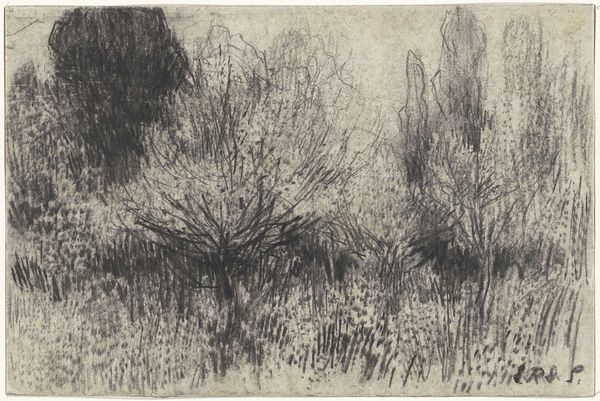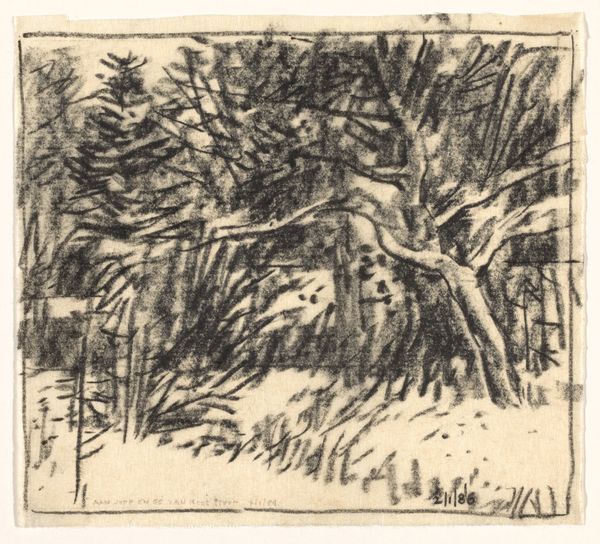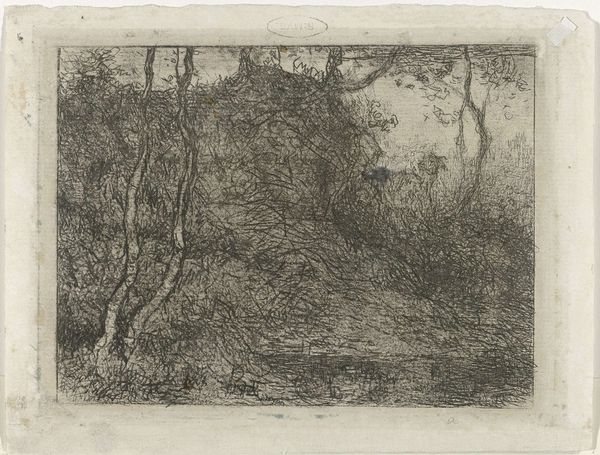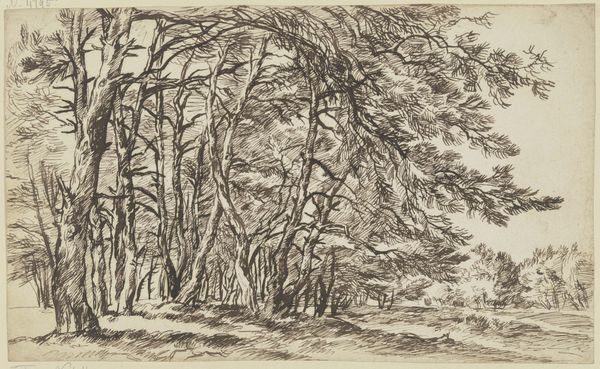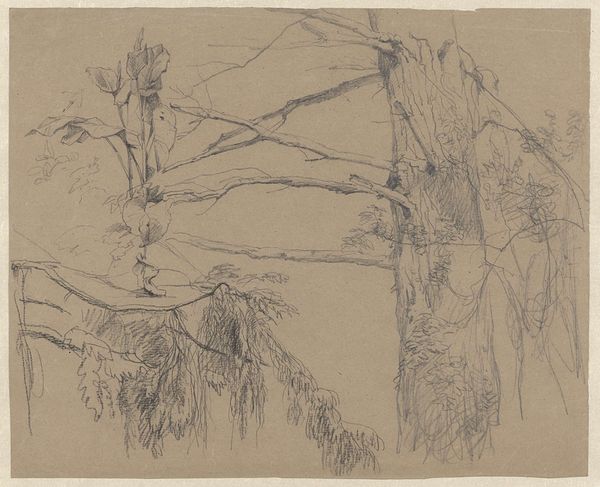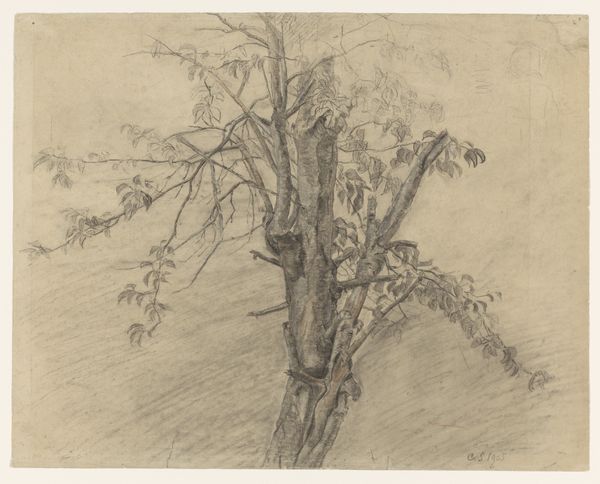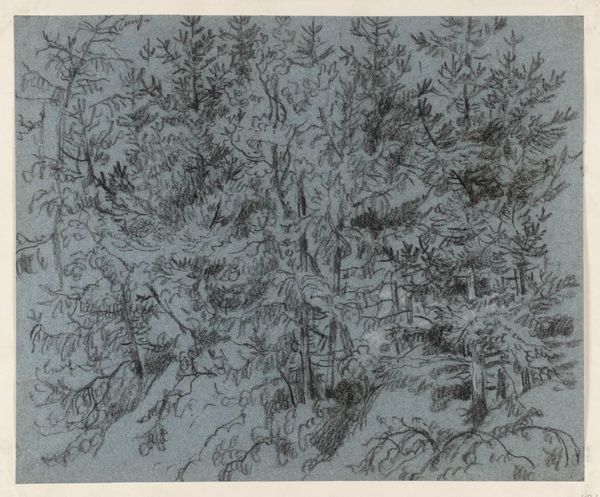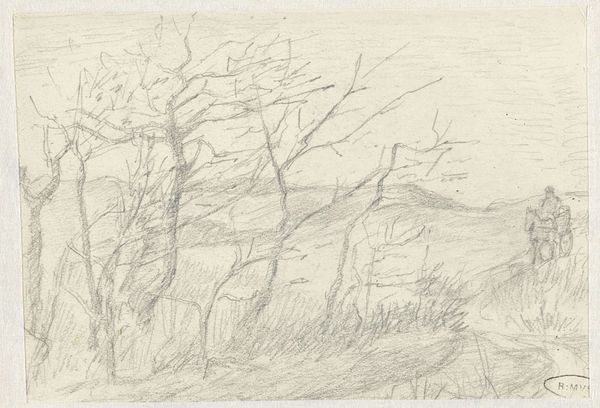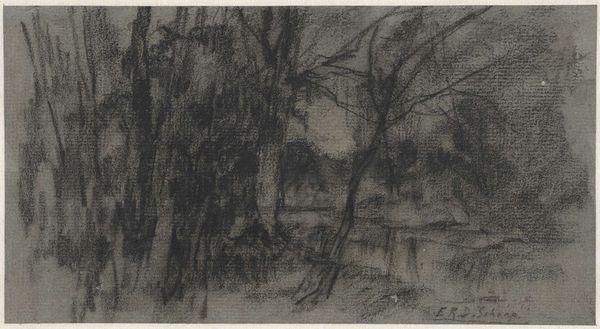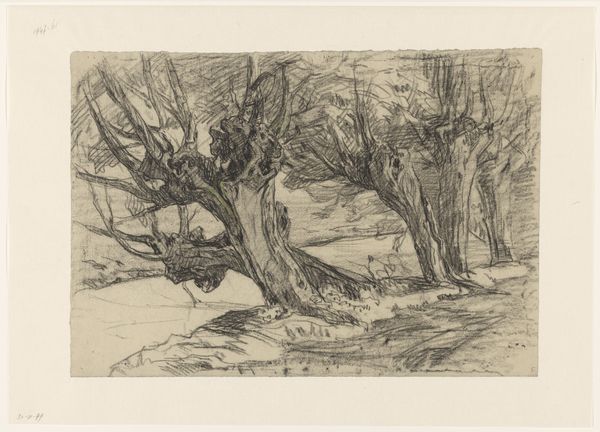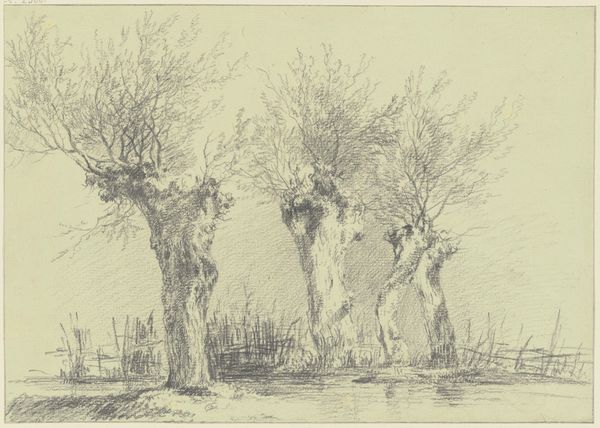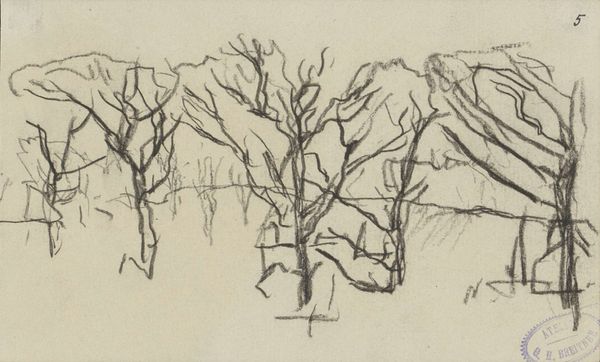
#
light pencil work
#
pen sketch
#
pencil sketch
#
incomplete sketchy
#
ink drawing experimentation
#
pen-ink sketch
#
pen work
#
sketchbook drawing
#
sketchbook art
#
fantasy sketch
Dimensions: height 241 mm, width 309 mm
Copyright: Rijks Museum: Open Domain
Editor: Here we have "Enkele knotwilgen," or "Several pollard willows," by Egbert Rubertus Derk Schaap, dating somewhere between 1872 and 1939. It looks like it was made with pencil and ink. There's a kind of haunting beauty to these trees, even in a simple sketch. What do you see in this piece? Curator: This seemingly simple sketch resonates with deep cultural roots. The pollard willow, through centuries, has served as a potent symbol. In many traditions, the bare branches of winter represent death or dormancy, but the re-sprouting signifies resilience and the cyclical nature of life. Notice how the artist uses the ink to emphasize the gnarled, almost human-like forms of the trunks. Does that suggest any intentionality? Editor: It does give the trees an almost anthropomorphic quality. Like they've witnessed something… enduring the seasons. Curator: Precisely. The skeletal branches against the stark sky evoke a sense of timelessness, carrying within them the weight of stories, memories, and resilience. The sketch could reflect the somber mood and longing for simpler times common during periods of rapid industrialization and social change, couldn't it? How do you feel about that? Editor: It makes me consider what aspects of life the artist may have viewed as under threat at the time. The way we are still so interested in them over 100 years later makes me think they captured a feeling of environmental loss that has continued to resonate through today. Curator: I think this piece captures Schaap's observation of the world, inviting viewers to interpret that world through their own lens, through these images. Editor: So even simple sketches can act as mirrors reflecting our past and current concerns! Thanks!
Comments
No comments
Be the first to comment and join the conversation on the ultimate creative platform.
